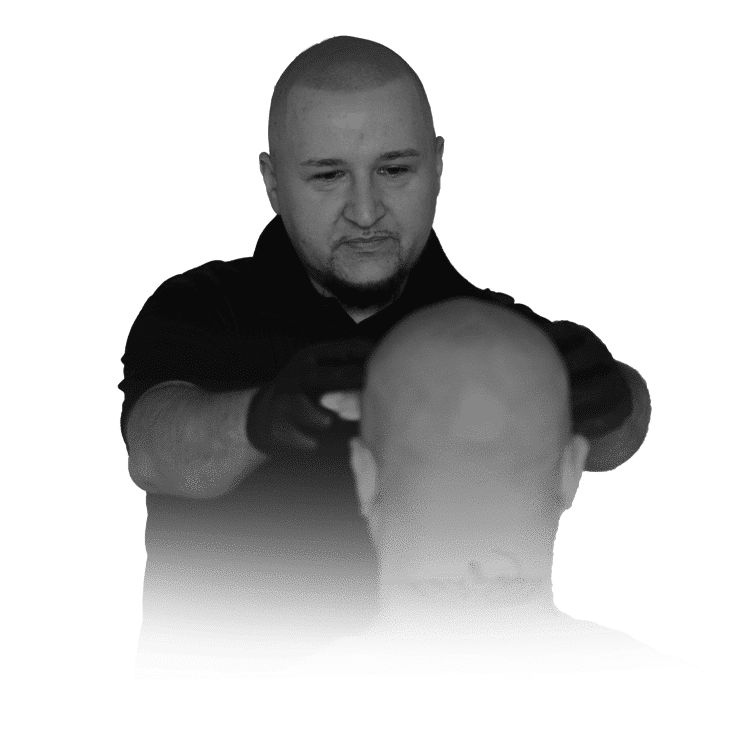Scalp Micropigmentation
What are the Treatments of Hair Loss?
Effective hair loss treatment begins with determining the cause. Men’s hair loss can be caused by either genes or the environment. Androgenetic alopecia, often known as male pattern baldness, can be a hereditary trait. According to recent research, it affects approximately fifty percent of men. Despite the fact that hair loss cannot always be stopped, some treatments and therapies may halt the process. It will also be beneficial to learn which vitamins and unique tonics have shown promise in preventing or treating hair loss before purchasing any.
In this article, we will be going over a couple hair loss treatments that could help you prevent your hairline from receding any further and assist in strengthening your hair follicles.
Treatments for Hair Thinning that may actually work

If you wish to treat your thinning hair or receding hairline, you should consult a dermatologist or scalp specialist first to get expert advice on which treatment is best for you. They can determine the cause of your hair loss and suggest therapies that may be suitable for you. They might recommend options such as:
- Minoxidil (Rogaine)
Minoxidil is a well-known treatment that is applied to the scalp as a foam or liquid. It is available over the counter and without a prescription. It may take several months of use before your hair thickens. If your hair does regenerate, it will fall out again if you stop using Minoxidil. Minoxidil is typically more effective when used with another hair loss medication.
It causes hair regrowth in the majority of individuals, however, it typically takes three to six months to see the effects. If you observe regrowth, you must continue applying it daily. However, if you stop applying it to your scalp, hair loss has a high chance of returning. Minoxidil can aid in preventing early hair loss, but it cannot restore a full head of hair.
- Finasteride (Propecia, Proscar)
Finasteride is available as a daily tablet. Finasteride is typically more effective when administered at the onset of hair loss. It is only available with a doctor’s prescription. The FDA notes that it will typically take at least three months of daily administration to observe the drug’s effects. As with other hair loss treatments, this also needs time to be effective.
Typically, it takes four months to observe any change.
A dermatologist may also prescribe this medicine to treat infertile women with inherited hair loss. If Finasteride is effective, you will need to continue taking medication to maintain your results. Once you stop taking it, your hair loss will most likely come back. Before taking this medication, see your dermatologist about possible adverse effects.
- Hair Transplant
This type of surgery can provide long-term benefits. A surgeon transplants individual hairs or a strip of skin with follicles from one area of the scalp to thinning or balding areas. According to experts, the surgery takes between 4 and 8 hours. Consult a dermatologist to evaluate whether this treatment is appropriate for you.
Follicular unit transplantation and follicular unit extraction are the most common hair transplant methods. Keep in mind that both hair transplant operations are considered surgical procedures, so they can be costly and painful. There are also hazards involved, such as infection and scarring. You may require numerous hair transplant procedures to achieve the desired results.
- Follicular unit transplantation (FUT)
FUT is the more “traditional” procedure. It involves the removal of skin, often from the hair-rich back of the scalp. A surgeon then removes the follicles from the skin strip. Finally, the hair follicles are reinserted into the area of the scalp where hair loss is most prominent.
- Follicular unit extraction (FUE)
A surgeon harvests hair follicles straight from the scalp and transplants them to balding areas of the scalp during FUE. Direct hair implantation (DHI) is a modified variant of this procedure that requires using a specific specialised tool.
- Microneedling
According to Dermatology specialists, using a specialised gadget with hundreds of tiny needles on your scalp may promote hair growth. Research suggests that microneedling may be more effective when combined with another hair loss treatment. You can purchase one of these devices without a prescription, but you should first consult a dermatologist. They can tell you if microneedling is safe for you and prescribe a piece of specific equipment.
- The consumption of healthy minerals, vitamins, and other dietary supplements
If a blood test finds that you are deficient in biotin, iron, or zinc, your dermatologist may advise you to take more vitamins or prescribe a dietary supplement. If you are not consuming enough protein, your dermatologist might offer advice on how to increase your consumption. If a blood test reveals that you are deficient in biotin, iron, or zinc, it is preferable to take those nutrients solely. Taking a supplement if your levels are normal can be dangerous.
For instance, excessive iron consumption might result in iron toxicity. Early symptoms include abdominal pain and vomiting. Other hair loss pills often have a high concentration of a single ingredient. Due to the risk of consuming too much of the nutrient, many dermatologists advise taking a multivitamin instead.
- Platelet- Rich Plasma
Platelet-rich plasma (PRP) is a relatively novel treatment for androgenetic alopecia utilised by physicians. It includes a doctor collecting a blood sample and spinning it in a centrifuge. This equipment separates the PRP from the blood, allowing the physician to remove the platelets and inject them into particular areas of the scalp where hair loss is occurring. According to the American Academy of Dermatology, the process takes approximately ten minutes.
The majority of patients receive the treatment once per month for three months, with subsequent treatments occurring every three to six months. The platelets may heal damaged hair follicles. According to a recent study, PRP therapy can prevent hair loss, however, the supporting data is of poor quality and lacks years of research to dive deeper into its effectiveness.
- Scalp Micropigmentation
Scalp Micropigmentation, abbreviated SMP, is more than just a simple hair tattoo. Scalp Micropigmentation is a non-invasive procedure that deposits colour into the scalp using microneedles. This renders the appearance of microscopic hair follicles that assist restore the appearance of thicker hair. The objective of SMP is not to generate hairlike lines, as with microblading eyebrows, but rather to create the appearance of a shadow on the scalp using small, stacked dots in various shades of black. This technique, known as pointillism, produces depth and definition that appear natural. Scalp Micropigmentation, when administered by a skilled and licensed specialist, can repair a receding hairline, thicken remaining hair, conceal transplant scarring, and produce the appearance of close-cropped hair.
Bottom Line
There are numerous treatments available for hair loss. These include over-the-counter and prescription drugs, hair implants, and natural therapies. Effective hair loss treatment begins with determining the causes. A board-certified dermatologist should be consulted for an appropriate diagnosis. These specialists have an in-depth understanding of the numerous reasons for hair loss and extensive experience treating the various causes. Do not wait for all your hair to fall before you address the problem. The sooner you address the signs of hair loss, the greater the likelihood that therapies will aid in hair regrowth.
If you or a close friend is in search of a professional scalp micropigmentation specialist in Melbourne, then Luxe Micro is the team you have been looking for! Luxe Micro is aware of the difficulty associated with hair loss. We fully understand your struggle. Our chief practitioner, Marcin, underwent the operation after suffering from hair loss and losing considerable self-confidence. His personal experience uniquely qualifies him to provide others with the compassionate support and knowledge required to recover their hairline and, most importantly, their confidence!







